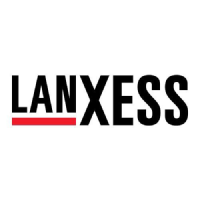|
**Haftungsausschluss: Der Text wurde mit Hilfe einer KI zusammengefasst und übersetzt. Für Aussagen aus dem Originaltext wird keine Haftung übernommen!**
**Zusammenfassung:**
Die Aktie von LANXESS Aktiengesellschaft (LXS) ist in dieser Woche um 17 % eingebrochen, nachdem das Unternehmen einen enttäuschenden dritten Quartalsergebnis vorgelegt hat. Die Umsatzerlöse blieben hinter den Analysterwartungen um 6,2 % zurück, was zu einem statischen Verlust von 0,89 Euro pro Aktie führte – eine deutliche Abweichung von den erwarteten Gewinnen.
Trotz einer stabilen Umsatzprognose von 5,9 Milliarden Euro für 2026 (die von den 14 Analysten, die das Unternehmen überwachen, beibehalten wird), haben die Analysten ihre Erwartungen hinsichtlich des Verlusts pro Aktie erhöht und einen Rückgang um 68 % auf 0,90 Euro prognostiziert. Diese Verschiebung der Perspektive hat zu einer leicht angepassten Konsens-Kursziel von 23,62 Euro geführt.
Dennoch zeigt die Analyse erhebliche Divergenzen unter den Analysten. Einer bullischen Analysten hat ein deutlich höheres Kursziel von 34,00 Euro, während die pessimistischsten Prognosen bei 17,00 Euro liegen. Diese breite Bandbreite unterstreicht unterschiedliche Ansichten über das Potenzial des Unternehmens.
Vor allem betont der Bericht eine sich verlangsamende Wachstumsdynamik für LANXESS. Analysten prognostizieren nun eine Verlangsamung des Umsatzwachstums auf 0,2 % pro Jahr bis zum Ende 2026, im Gegensatz zu dem historischen Durchschnitt von 0,4 % in den letzten fünf Jahren. Darüber hinaus wird die Branche insgesamt ein Umsatzwachstum von 2,6 % pro Jahr erwartet – was darauf hindeutet, dass LANXESS seine Konkurrenten hinter sich lässt.
Der Fazit ist eine Prognose erhöhter Verluste für LANXESS im kommenden Jahr, was Bedenken aufwirft. Obwohl die Umsatzprognose konstant bleibt, deuten die verstärkten Verlustprognosen auf zugrunde liegende Herausforderungen hin. Die Kursziele der Analysten von 23,62 Euro spiegeln einen Glauben wider, dass das Geschäft den Erwartungen entspricht *trotz* dieser erhöhten Verlustprognose.
Die langfristige Perspektive ist eine Schlüsselfaktoren bei der Bewertung. Die Analysten liefern Prognosen, die bis 2027 reichen, und eine tiefere Analyse offenbart ein kontinuierliches Bild von langsamerem Wachstum und potenziellen finanziellen Schwierigkeiten. Der Bericht unterstreicht die Bedeutung der Bewertung der langfristigen strategischen Ausrichtung, nicht nur kurzfristiger Gewinnberichte.
|
|
**Haftungsausschluss: Der Text wurde mit Hilfe einer KI zusammengefasst und übersetzt. Für Aussagen aus dem Originaltext wird keine Haftung übernommen!**
**Zusammenfassung (ca. 500 Wörter)**
Dieser Bericht analysiert die jüngste finanzielle Leistung von Lanxess AG (LNXSF) unter Berücksichtigung des Earnings-Call-Transkripts, das am 6. November 2025 veröffentlicht wurde. Das Unternehmen navigiert in einem herausfordernden Umfeld im europäischen Chemie-Sektor, das durch sinkende EBITDA und zunehmenden Wettbewerbsdruck, insbesondere von Asien, gekennzeichnet ist.
**Wichtige negative Entwicklungen:**
* **Deutlicher EBITDA-Rückgang:** Lanxess verzeichnete einen erheblichen Rückgang des EBITDA um 225 Millionen EUR im Vergleich zum Vorjahr, der hauptsächlich auf Volumenrückgänge aufgrund von Wettbewerbsdruck und niedriger Auslastung beruht. Die Auslastungsrate der Anlagen liegt nun bei etwa 67 %, was erhebliche Leerlaufkapazitäten anzeigt.
* **Wettbewerbsdruck:** Der größte Herausforderung ist der intensive Wettbewerb, insbesondere von asiatischen Produzenten, vor allem aus China, im Bereich der Zwischenprodukte. Dies wirkt sich negativ auf die Mengen und die Rentabilität aus.
* **Guidance-Anpassung:** Angesichts dieser Faktoren hat Lanxess seine Guidance auf das untere Ende der zuvor genannten Spanne von 520 bis 580 Millionen EUR angepasst.
* **Niedrige Auslastung:** Dies ist ein kritischer Indikator, der Ineffizienzen anzeigt und die Fähigkeit des Unternehmens beeinträchtigt, die gewünschten Gewinnmargen zu erreichen.
**Positive Entwicklungen und Strategien:**
* **Arbeitskapitalmanagement und Kostenreduzierung:** Lanxess setzt auf effektives Arbeitskapitalmanagement, insbesondere bei der Forderungseinholung, sowie ein Kostenreduktionsprogramm von 100 Millionen EUR. Dies beinhaltet die Rationalisierung von Verwaltungsprozessen und ein Stellenstillstand.
* **Forward-Programm und Anlagenstilllegungen:** Das "Forward-Programm" des Unternehmens beinhaltet Anlagenstilllegungen und Produktoptimierungen, die die Produktionseffizienz verbessern.
* **Vorteile durch Anti-Dumping-Entscheidungen:** Entscheidungen zugunsten von Anti-Dumping-Maßnahmen für seine hochleistungsfähigen Zwischenprodukte und Polymeradditive haben sich positiv auf das EBITDA ausgewirkt.
* **Take-or-Pay-Verträge für Saltigo:** Langfristige Take-or-Pay-Verträge im Rahmen von Saltigo bieten Schutz vor Schwankungen der Volumina.
* **Europäischer Wettbewerbslandschaft:** Die erwartete Außerbetriebnahme schwächerer Wettbewerberkapazitäten bietet Lanxess als Volumes zurückkehren, einen potenziellen Vorteil.
This translation should accurately convey the key points of the original report. Let me know if you'd like me to adjust or elaborate on any aspect! |




